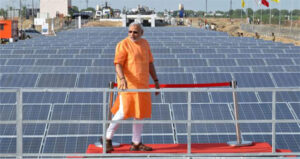Kerala Homes Or Mini Solar Power Stations; The Soura Project
March 8, 2021The Upcoming Basic Customs Duty (BCD) on Solar Imports in India
March 12, 2021India still relies heavily on coal for its power needs. More than 80% of the country’s electricity comes from burning coal, oil, and biomass currently, according to a report by the IEA. India accounted for 7% of the global CO2 emissions in 2018, right after China and the U.S. India is poised to become one of the top three nations globally, by 2030. The growth in India’s energy demand will outpace any other nation until at least 2040. Growing population, rapid industrialization, and increasing infrastructure demand will act as tailwinds for energy demand growth. Hence the need for a strategic green plan to reduce the nation’s growing carbon footprint is paramount.
The country is looking to tap renewable energy aggressively, to power its growing needs. India ranked amongst the 11 nations to have made consistent progress on its energy transition over the last six years. The country’s ambitious target of 450 GW of renewable energy by 2030 is the world’s largest expansion policy by far. Though the country has made some progress in this regard by bringing electricity connections to hundreds of millions of people and scaling up solar installations, solar energy still accounts for a modest 4% of the overall energy mix in India currently.
India has favorable technical and commercial conditions to facilitate solar energy projects. High levels of solar irradiation, favorable government policies, and financing aspects should support future growth. The country is poised to attract huge investments in solar energy in the near future.
Here are the five most important factors making India a lucrative solar market for investors:
- The RPO mandates have also increased from 0.25% in 2012 to 3% in 2022
- Up to 100% FDI is allowed for renewable energy generation and distribution projects
- Around 60 solar cities have the approval for setting up 50 solar parks of 40 GW by 2020
- Growing lender interest in renewable energy
- Solar power is the cheapest in India.

